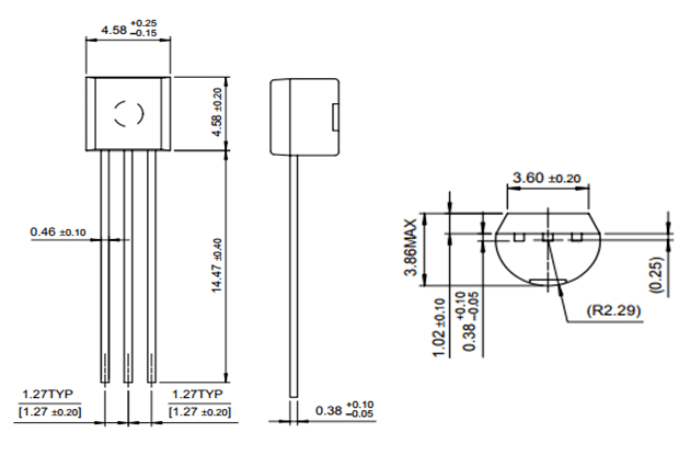The BC546 is a high frequency NPN Transistor commonly used in low noise amplifier designs. It has a maximum gain value of 800 and a high collector to emitter voltage of 65V making it also suitable for high voltage audio amplifier applications.
Pin Configuration
Pin Number
Pin Name
Description
1
Emitter
Current Drains out through emitter, normally connected to ground
2
Base
Controls the biasing of transistor, Used to turn ON or OFF the transistor
3
Collector
Current flows in through collector, normally connected to load
Features
- NPN Amplifier Transistor
- Current Gain (hFE), 110 to 800
- Continuous Collector current (IC) is 100mA
- Collector-Emitter voltage (VCEO) is 65 V
- Collector-Base voltage (VCB0) is 80V
- Emitter Base Voltage (VBE0) is 6V
- Transition Frequency 150MHz
- Available in To-92 Package
Note: Complete Technical Details can be found at the BC546 datasheet given at the end of this page.
BC546 Equivalent
2N3904, 2SC945,BC547, BC548, BC550
Complementary PNP Transistors
BC556, A733 and BC560
Where to use BC546 Transistor
The BC546 is a popular NPN Amplifier transistor that can be found in many audio pre-amplifier designs. The Transistor has a gain value of 800 with a transition frequency of 150MHz, the transistor is also know for its low noise feature.
The BC546 has very low Continuous current of 100mA with a collector to emitter voltage of 65V, hence it cannot be used to switch heavy loads. So it can be used in places where the load current is less than 100mA.
Brief Description on BC546 Transistor
BC546 is a NPN transistor hence the collector and emitter will be left open (Reverse biased) when the base pin is held at ground and will be closed (Forward biased) when a signal is provided to base pin. It is a low current transistor hence the maximum amount of current that could flow through the Collector pin (Ic) is 100mA, hence we cannot connect loads that consume more than 100mA and load voltage more than 30V using this transistor. BC546 has a decent gain value hfe up to 800; this value determines the amplification capacity of the transistor.
When this transistor is fully biased then it can allow a maximum of 100mA to flow across the collector and emitter. This stage is called Saturation Region. When base current is removed the transistor becomes fully off, this stage is called as the Cut-off Region.
Applications
- High voltage, low noise amplifier designs
- Switching small loads
- Small signal amplifiers
- Darlington pair
- Pre-amplifier circuits
- Audio Noise filters
2D model of the component
If you are designing a PCD or Perf board with this component then the following picture from the BC546 Datasheet will be useful to know its package type and dimensions.
